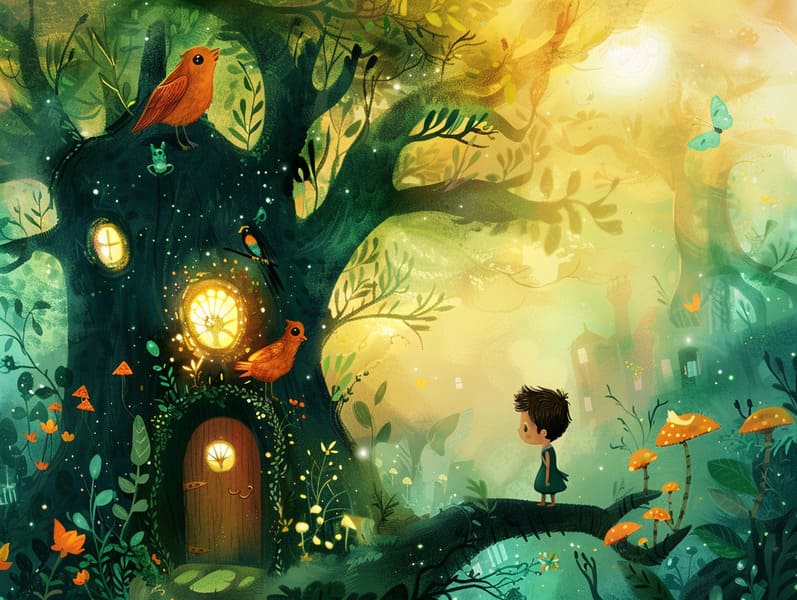Tracing the Heritage of Fairy Tales and Its Unwavering Mystique.
Tracing the Heritage of Fairy Tales and Its Unwavering Mystique.
Blog Article

Famous fairy tales have old origins. These tales have been spoken from one generation to the next long before they were ever transcribed. They were born from a variety of societies, including Western traditions. They were initially conveyed among adults, often carrying themes and messages relevant to the societal norms and beliefs of the time.
The Brothers Grimm, Jacob and Wilhelm, were among the first to compile many of these beloved tales. Their collection, "Grimm's Fables," included narratives like "Cinder Maid," "Hansel and Grethel," and "Snow White," which have since become essentials in the world of classic fairy tales. Similarly, Andersen's charming tales, such as "The Sea Maid," and "The Little Duckling," have captured hearts worldwide, securing their place in the pantheon of classic fairy tales.
Even though they are old, classic fairy tales remain as applicable as ever, especially as kids' bedtime tales. These delightful tales are now available in numerous formats, including vibrantly illustrated books, delightful animations, and online fairy tales.
Their ongoing significance can be ascribed to several magical reasons:
Moral Lessons: Old fairy tales often provide important moral lessons. Fairy tales like "The Tale of the Boy Who Cried Wolf" teach the value of integrity, while "The Tale of the Tortoise and the Hare" show the benefits of perseverance and modesty. These narratives offer little ones clear distinctions between good and bad, helping to shape their moral compass in a kind yet significant way.
Empathy and Understanding: Ancient fairy tales frequently present heroes facing challenges and struggles, prompting children to sympathize with their struggles and celebrate their triumphs. For instance, "The Tale of Beauty and the Beast" points out the benefit of seeing beyond looks to comprehend the inner self of a soul, building warmth and awareness.
Cultural Recognition: Many ancient fairy tales are steeped in the cultural contexts from which they originated. Reading these fairy tales can provide captivating looks into different ways of life, encouraging a sense of world awareness and knowledge.
Imagination and Innovation: The mythical elements in timeless fairy tales—fairy godmothers—provoke children’s visions. These tales bring readers to otherworldly realms, engendering imaginative dreams and a sense of astonishment that stays a lifetime.
Timeless fairy tales are not only mesmerizing but also informative. They function as enchanted tools in strengthening various intellectual and emotional capacities in the young. When traditional fairy tales are recited, they foster language acquisition by presenting new words and complex sentence structures. This practice also strengthens listening skills and attentiveness, as young readers remain attentive, eager to see what happens next.
Furthermore, reflecting on the themes and characters of classic fairy tales can sharpen thought processes and evaluative skills. Children are instructed to notice patterns, anticipate outcomes, and understand cause and effect. These conversations also boost children utter their thoughts and feelings, advancing their emotional intelligence.
In today’s technological age, the existence of online storybooks has made these fairy tales more accessible than ever. Web-based platforms and online apps share large libraries of Grimm's fairy tales that can be read or listened via anytime, anywhere. Fairy tales narrated are particularly prevalent, featuring an interactive method for the young to be a part of these entrancing tales. Sound books and read-aloud videos carry characters and settings to life, often supplemented by charming audio effects and music that intensify the storytelling journey.
The lasting appeal of classic fairy tales lies in their ability to change to modern times while continuing with their underlying messages. Contemporary retellings of these tales often integrate more varied characters and modern settings, making them pertinent to today’s audience. However, the underlying themes of boldness, warmth, and fair-mindedness remain unchanged, continuing to influence young readers of all ages.
Ancient fairy tales also offer a sense of assurance and homeliness. They render accessible a structured narrative with a obvious beginning, middle, and end, often drawing to a close with the termination of conflicts and the triumph of get more info rightness over wrongness. This assuredness can be consoling for young ones, allowing a sense of stability in an variable world.
Traditional fairy tales continue to enchant and educate new generations, maintaining their magic and value in modern society. As nighttime stories for kids, they put forth a perfect blend of charm and enlightenment, encouraging moral values, empathy, and creativity. The accessibility of digital fairy tales and the well-received status of fairy tales read aloud ensure that these ancient stories remain obtainable to new generations.
By maintaining and relating these fairy tales, we continue to praise the rich tapestry of fables and cultural heritage. Whether you are experiencing a richly illustrated book, seeing a internet collection, or hearing an voice book, the spell of ancient fairy tales is always within reach. These fairy tales teach us of the everlasting spell of narratives and its ability to tie us across epochs and places.
If you are enjoying a vividly illustrated book, delving into a online library, or hearing an voice book, the radiance of timeless fairy tales is always within reach.
These tales reveal of the timeless ability of stories and its ability to link us across epochs and places, forging a link that fascinates and enlightens alike.